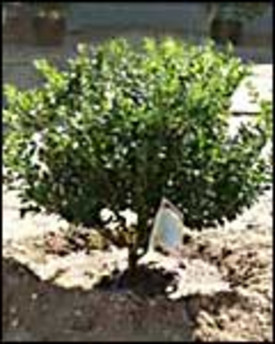|
Step One
Dig a hole twice the size of your plant’s root ball. Create a planting mix by combining 1/3 yard soil, 1/3 peat moss and 1/3 organic matter, such as composted cow manure.
As an alternative, a good planting mix can be created by combining one-half good topsoil with one-half of a formulated tree and shrub planting mix. If existing soil conditions are optimal for planting, reduce the recommended amount of soil amendments accordingly. For annuals, vegetables and indoor plants use standard potting soil.
Step Two
When working with container plants, invert the container and hold the stem of the plant with one hand and gently pull the lip of the container. To slide the container off you may need to tap the sides with a shovel. For larger containers cut the container on two sides from the lip to the base. With a knife slice the root base on three sides to help new roots branch out and adapt to surrounding soil.
When working with balled and burlapped plants, cut the top string and roll the burlap half way down the ball. If the root ball has a wire basket, fold wire loops down the root ball below ground level. It is not necessary to remove wire basket.
Step Three
Fill the hole half full with soil mix. Position the plant in the ground so that the top of its root ball is at, or slightly above, soil level. Surround the root ball with planting mix. Do not plant too deeply.
Step Four
Create a deep basin of soil around the plant to retain water. In order to thoroughly water the bottom roots, place a hose in the basin and allow the water to trickle in for 45 to 60 minutes. Water two to three times weekly or as needed until the plant is well established.
Step Six
Apply a two- to four-inch layer of bark mulch around the plant’s base to control weeds and retain moisture. Keep mulch away from the stem of the plant to prevent decaying on hard wood stems.
Step Seven
Do not use any chemical fertilizers during the first planting season. Beginning with the second growing season, fertilize periodically for lush, healthy plants.
Credit: Mahoney’s





























